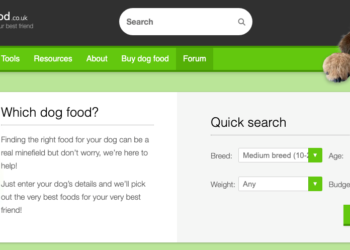[ad_1]
Puppies and adult dogs are equally curious about their environment and learn by smelling and tasting objects of interest. Unfortunately, many common plants and flowers contain compounds that are toxic to dogs. Consuming any portion of these poisonous plants can lead to serious health problems ranging from mild digestive upset to life-threatening cardiac dysfunction and death.
Knowing which plants are toxic to dogs and how to recognize poisoning signs can minimize your pup’s risk and ensure a good prognosis. Here’s what to avoid in your home or garden and what to do if your dog eats a toxic plant.
Common Garden and Indoor Plants Toxic to Dogs
Compare the following toxic plant list to plants in and around your home to identify potential hazards.
Toxic Flowers and Bulbs
- Autumn crocus
- Begonia
- Chrysanthemum
- Cyclamen
- Daffodils
- Lilies
- Oleander
- Hyacinth
Toxic Shrubs and Trees
- Azalea
- Black Walnut
- Boxwood
- Fruit trees (e.g., apple, apricot, cherry, peach, and plum)
- Holly
- Hydrangea
- Rhododendron
Toxic Fruits and Vegetables
Toxic House Plants
- Aloe
- Dieffenbachia
- English Ivy
- Jade Plant
- Lilies (e.g., Easter Lily, daylilies)
- Schefflera
- Peace Lily
- Philodendron
- Pothos
- Sago Palm
This list is not comprehensive but should provide a good start for your search. To ensure you’ve identified all toxic plants in your home and yard, use a plant identification app to confirm the identity of unknown plants, flowers, and shrubs. Then, look up each plant by its common or scientific name in the ASPCA Toxic and Non-Toxic Plants List.
Check out our list of dog-friendly garden plants.
Symptoms of Plant Poisoning in Dogs
Despite your best efforts, your puppy or dog may sneak a bite of a poisonous plant without your knowledge. This is especially likely if you travel with your pup or visit friends and family together. Fortunately, poisoning signs are difficult to miss—affected dogs will typically be visibly sick with signs that may include:
- Vomiting
- Diarrhea
- Drooling
- Difficulty breathing or swallowing
- Seizures
Tips for Dog Proofing Your Garden
What to Do if Your Dog Ate a Toxic Plant
If you suspect your pet has ingested a toxic plant, do not take a wait-and-see approach. Prompt treatment is critical to ensure a safe and healthy outcome. Stay calm, contact your veterinarian, and take action to protect your pup’s health and well-being.
Collect the Plant
If you know which plant your pet ingested, bring it—or at least a photo if the plant is too large—with you to the veterinary hospital. This can ensure your veterinarian provides accurate treatment and can anticipate possible toxic side effects.
How Vets Treat Plant Poisoning in Dogs
Decontamination, or getting the plant out of your dog’s system, is typically the first step in treating plant poisoning. Depending on when your pet ingested the material and what kind of plant it is, this may include administering a medication that stimulates vomiting or a substance such as activated charcoal to bind and absorb toxins in their gastrointestinal tract. If your dog is already showing visible illness signs, additional tests (e.g., blood work), treatments, and overnight hospitalization may be necessary.
With rapid veterinary intervention, most dogs recover without permanent injury. However, prevention is always the best way to ensure your pup’s safety around toxic plants.
Puppy Proofing Your House for Toxic Plants
Puppy proofing is an important aspect of dog ownership, even when your adult or senior dog is merely a puppy at heart. In addition to basic puppy proofing steps such as securing gates and fences and removing access to choking hazards or electrical cords, plant-specific puppy proofing involves identifying and removing toxic plants or relocating them out of paw’s reach.
Safeguarding Your Yard and Garden
Perform a thorough inspection of your yard, garden, and landscaped areas looking for toxic plants, flowers, shrubs, and trees. Remember that leaves, stems, and bulbs can also be harmful, so completely remove toxic plants or build a barricade around them to keep curious canines away. Additionally, materials such as fertilizers, weed killers, and certain pesticides, including slug bait and rodenticides, are extremely toxic to dogs and should be completely removed and replaced with dog-safe alternatives.
Search for Toxic Houseplants
If your green thumb extends to the great indoors, check your house plant collection for harmful greenery and flowers. Keep in mind that all parts of some toxic plants and flowers—including the water they’re kept in—may contain harmful compounds. Relocate toxic plants to high shelves and inaccessible spaces or replace them with dog-friendly alternatives.
Training a Dog Not to Eat Plants
While puppy or dog-proofing your indoor and outdoor spaces is the best way to minimize toxic plant encounters, training your dog to leave plants alone provides an additional layer of safety and can give you greater peace of mind. Basic obedience training behaviors such as “Leave it” and rewarding your puppy or dog for playing with appropriate toys—rather than house plants or garden vines—can increase your dog’s confidence and independence while building a trusting relationship. Providing your dog with appropriate physical and mental activity every day will promote greater satisfaction and decrease destructive behaviors (e.g., stealing things, knocking over plants, and chewing or eating inappropriate items), which are often motivated by boredom.
Plant toxicity in dogs is a common emergency, but it’s also preventable. By familiarizing yourself with the most common dog-toxic plants and toxicity warning signs, you can anticipate and remedy potentially dangerous situations, reduce your pup’s exposure, and build a dog-friendly garden or indoor green space that allows you and your pup to enjoy paradise without fear of poisoning.
The Ollie blog is devoted to helping pet parents lead healthier lives with their pups. If you want to learn more about our fresh, human-grade food, check out MyOllie.com.
[ad_2]
Ollie Pets
2024-04-26 22:03:11
Source :https://blog.myollie.com/plants-toxic-to-dogs-what-to-avoid-signs-of-poisoning/

















